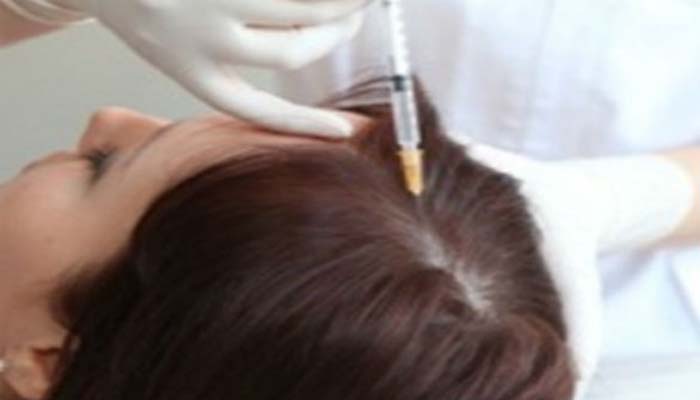Nursing
Beyond The Bedside: The Key Role of Nurses in Health Literacy

Health literacy is simply the ability to understand and apply health-related information. Although the concept is easy to understand, achieving health literacy across large populations is a complex and ongoing process. Nurses play a very important role in this process. In the realm of managing chronic diseases especially, health literacy is more important than ever, and nurses will have a big say in its success.
Understanding health literacy
Understanding health literacy goes beyond simply being able to read and understand medical information. It is a multifaceted concept that includes comprehension, application, and decision-making related to medical information. It is about understanding the complete picture and knowing how to respond.
Comprehension is the first step. This is the ability of patients to understand what healthcare professionals are telling them. This extends from understanding the doctor’s instructions for taking medications to comprehending what their diagnosis and treatment plans mean. True health literacy doesn’t stop at comprehension, however. It also involves application. Patients need to understand their condition, then apply this knowledge and make good decisions in managing their own care.
As part of the comprehension process, there are a couple of techniques nurses can use to identify what level of health literacy a patient currently has. The teach-back method is one where the nurse has the patient explain back what they understood, and the REALM-R screening tool is a brief reading recognition test. There are other similar types of tests that can be used too.
The importance of each of these components cannot be understated. If a patient doesn’t really understand the situation they are in, they could make bad decisions. They may not even follow the instructions for taking their medication, and this can be dangerous. Especially with a chronic disease, if a patient has a poor understanding of what they need to do to treat it, it will almost certainly become worse.
Chronic disease management
Chronic diseases are ongoing and include conditions such as heart disease, diabetes, cancer, or even autoimmune diseases that many millions of people deal with each day. Not only are they a significant cause of disability, but they are also the leading cause of death around the world.
For this reason, it is so important that patient education is personalized. This goes beyond handing out pamphlets or directing patients to websites. It is an interactive and ongoing process where nurses and other professionals guide patients through the complexities of their condition.
Nurses might use simple explanations or visual aids for some patients, while others may require more detailed discussions that are supported by written materials. For example, a nurse could help a diabetic patient understand how regular exercise impacts insulin sensitivity by using easy-to-understand language and relatable examples.
Another technique employed by nurses involves empowering patients in self-management of their conditions. Sticking with diabetes as an example, by teaching practical skills like monitoring blood glucose levels or administering insulin injections at home, nurses provide these patients with the tools and skills they need when they are not in hospital settings.
Furthermore, this empowerment can extend beyond the physical realm. Mental health is a big part of chronic diseases. Stress and anxiety can occur from the diagnosis and from regularly dealing with the symptoms of the condition. A lot of this can be alleviated with good education. In this context, education effectively acts as a bridge between mental health and chronic disease management. When a patient understands their illness better, they feel less anxious about it, which then positively affects their overall well-being.
Health literacy and digital technology
The growth of digital technology in healthcare has helped the process of health literacy in several ways. Accessibility is a big one, and now patients can use a huge range of apps, tools, and online platforms when they need access to information. This could include everything from using telemedicine consultations for appointments to fitness tracking apps to monitor different aspects of their health.
For nurses, they make use of things like webinars, videos, interactive quizzes, and even virtual reality experiences to enhance their teaching methods. These tech-based approaches have the benefit of allowing them to reach a wider audience and deliver information more efficiently than traditional face-to-face sessions.
These benefits do not mean that the transition into the digital realm is without its challenges, however. The huge expanse of the internet can make it difficult for patients to differentiate between credible sources and untrustworthy ones. Nurses often find themselves combating misinformation that patients encounter online, and this is an ongoing challenge.
Just as nurses will assess a patient’s current health literacy, they will also need to assess a patient’s technical proficiency. Some people may struggle with even basic tasks like navigating websites or downloading apps on their phones, while others might be well-versed in using advanced applications. These things need to be assessed before creating a digital-based intervention.
Thankfully, this trend is already well understood. There has been a push towards incorporating tech-savviness into nursing curriculums so that new graduates are prepared after they graduate. Many nursing schools now offer modules on e-health literacy where students learn about medical informatics systems and when it makes sense to use these tools in their practice.
The psychology of patient education
There is a psychological component when it comes to patient education. Patients may have different fears, apprehensions, and misconceptions that can be barriers to health literacy. Patients might be scared about their diagnosis or treatment plan, anxious about the medical procedures, or simply have false beliefs about their health condition. This is another area where nurses are important, to help set things straight.
Building trust with patients is the way nurses accomplish this. They use techniques including active listening, empathy, and non-verbal cues like maintaining eye contact to show understanding and support. Nurses also use simple language as much as possible. Their goal is not just to provide information but also to make sure patients feel comfortable to speak up if they don’t understand something.
The psychology of the patient greatly influences their openness towards health education. If a patient feels overwhelmed by fear or misinformation, they may be reluctant to learn more about their condition. On the other hand, if they feel understood and supported by their nurse, they will be much more willing to take on board what they are told.
Additionally, feedback loops are a big part of this. It is not enough just to pass on information from nurse to patient without checking what has been understood along the way. Regular checks help nurses gauge whether the message has been understood correctly. It is a good idea for nurses to ask open-ended questions like, ‘Can you tell me what we discussed?’ rather than closed-ended ones like, ‘Did you understand?’
Health education for diverse populations
The psychology component is important for all backgrounds, but there are additional considerations when dealing with diverse patient populations. Nurses often encounter patients from many different cultural backgrounds, each with their own unique health beliefs and practices. These differences can pose challenges in providing health education to the masses.
The most obvious challenge here lies in overcoming language barriers. Misunderstandings due to language discrepancies can lead to misinterpretation of information. This is where speaking in plain language becomes so important. Furthermore, nurses must be adept at working with interpreters or translation services whenever required.
Different cultures also have different ways of communicating. There may be certain topics that are off-limits or different ways that conversations about health are had. It can be hard to have a strong understanding of every single culture, but nurses should try to understand as much as they can about a patient’s culture when they are trying to educate them about health. For example, some cultures have different dietary restrictions than others, and other cultures have a long history of embracing traditional healing practices. All these things must be considered.
There have been many examples around the world where these types of approaches have been successful. In New Zealand, the Maori community historically had a lower engagement with mainstream healthcare services. Nurses were trained specifically on Maori culture and customs before conducting diabetes prevention workshops within the community rather than in typical clinical settings. This resulted in a big increase in participation rates compared to in the past.
Another example was in Canada, where anti-smoking campaigns were in French as well as English. This led to higher quit rates among French-speaking citizens compared to other efforts delivered solely in English. These are both basic examples of things that are very easy to do and have a positive impact overall.
Collaboration in health education
The complexities of healthcare require a team effort. Patients have diverse needs and come from diverse backgrounds, and it is impossible for a single nurse or other health practitioner to cover everything all at once. Nurses may find themselves collaborating with doctors, therapists, dietitians, and other disciplines.
In these teams, each member brings unique expertise to the table. A dietitian can offer insights into nutritional requirements for specific conditions, while therapists provide valuable perspectives on physical or mental rehabilitation techniques. Doctors contribute their broad overall medical knowledge and understanding of disease progression. As the role of the nurse involves interacting with patients most often, they are well-positioned to help summarize and explain these expert insights to patients.
Collaboration isn’t always smooth sailing, however. Challenges can often arise due to differing viewpoints or even different disciplines not communicating well together. Team members need to be open-minded and have a willingness to learn from each other’s experiences and expertise. Professional respect is the main thing here. They should acknowledge that despite differences in training backgrounds or approaches toward patient care, everyone shares the same goal.
Outcomes of nurse-led health education
Measuring the success of health literacy education is not simple. Different tools and metrics need to be evaluated beyond just medical outcomes. Testing patient knowledge, behaviors, and their satisfaction levels can also provide some insight.
Surveys are commonly used to assess patients’ understanding of their conditions and treatments post-education. These may include questions about medication dosage, potential side effects, lifestyle changes required for disease management, or prevention strategies. The aim of surveys is to determine whether the information provided by nurses has been absorbed by the patient.
Observational studies are another way to gain some insights. For example, nurses may monitor if diabetic patients have been accurately self-administering their insulin, or if heart disease sufferers have been adhering to recommended exercise regimens.
Beyond surveys, taking testimonials from patients can serve as another signal of how things are going. For example, an empowered individual could report that they took charge of managing their complex chronic illness at home after receiving clear instructions from a nurse. They may have struggled with managing their condition until the nurse took the time to make sure they understood their situation.
Training nurses for the future
Nurturing the next generation of nurses involves a significant shift in the way they are educated and trained. It is no longer enough for nursing schools to churn out graduates who are proficient in clinical skills alone. They must also be competent health educators. This is where the evolution of nursing education comes into play, with a heavy emphasis on health literacy.
A good example of a course taking this all into account is the one offered by Holy Family University. The online Accelerated BSN available in multiple states will have students emerging as competent and compassionate caregivers ready to impact the lives of patients. This course is 100% online too, which is a nice bonus for students with a current job.
Beyond training courses, it is important to note that learning doesn’t stop at graduation. Learning is an ongoing process throughout a nurse’s career. This is why continuous professional development and upskilling must be prioritized by nurses. Whether it is through webinars, workshops, conferences, or online courses, nurses today have many resources at their disposal to keep them up to date.
Patient feedback is another key element woven into this new approach. By hearing directly from those on the receiving end of care, trainee nurses can gain invaluable insights into how effectively they communicate health information or areas where improvement might be needed.
Additionally, mentorship and peer learning are always useful. Experienced mentors can provide guidance while sharing their wealth of knowledge amassed over the years and passing on what they wish they had known when they were starting out. Peer learning among students can be useful too. Two individuals can get something different out of the same education, and working together is a good way to fully understand a concept.
Challenges and solutions in nurse-led health education
Some of the common obstacles nurses face regarding education are patient resistance, skepticism, and non-compliance. Educating patients about their health conditions or treatment plans does not guarantee that they will adhere to medical advice. Some may be skeptical about the necessity or effectiveness of treatments due to misinformation from unreliable sources or personal beliefs.
Addressing these issues requires patience and skillful communication. Nurses must establish trust with their patients first, then explain complex information in understandable terms. They must listen actively to their concerns and clarify any misconceptions they might have. This process can be time-consuming, but it is very important. Patients need to have their feelings validated before they can be open to changing their thinking.
Another barrier lies within systemic issues in healthcare settings. It is not uncommon for there to be heavy workloads within the nursing industry while giving little priority to educational roles. The industry needs to recognize the importance of nurse-led health education and allocate more time to nurses during shifts for teaching sessions. This time could also be used to provide supportive tools like visual aids or multilingual materials.
Overcoming these barriers is no small feat but given the vastly important role played by nurses in promoting health literacy among populations, it is a challenge that deserves collective effort. By empowering patients with knowledge, they will lead the way for more informed healthcare decisions and better outcomes. This could have a flow-on effect and lead to healthcare being both more efficient and cheaper.








